
Imran Khan called bin Laden a 'martyr'. But he is not the only one who thinks like that. Nadeem F Paracha writes about the products of badly-digested postmodernist ideas and curious urban middle-class perceptions of faith and politics and their relationship with the so-called masses.
During his speech in the National Assembly yesterday (25th June, 2020) the Prime Minister of Pakistan, Imran Khan, said that Osama Bin Laden — once the most wanted man in the world and accused of masterminding and financing the deadly 9/11 attacks in the US — was a ‘martyr.’
This proclamation not only shocked the opposition, but many members of his party too were left dumbfounded. One is not sure exactly how the ‘military establishment’ has reacted, but in a time when India is probably planning another ‘false flag operation’ against Pakistan, and when the Foreign Ministry is assigned to persuade the US and other western countries to castigate India’s policies in Occupied Kashmir, one wonders how can this be achieved by a country whose PM hails a terrorist as a martyr?
There is every likelihood that after yet another tongue-lashing by an increasingly frustrated establishment, he might explain his statement as a ‘slip of the tongue.’ Or, considering his almost childlike stubbornness, he might stick to his guns. But this piece is not only about him. It’s about many people like him i.e. products of badly-digested postmodernist ideas and curious urban middle-class perceptions of faith and politics and their relationship with the so-called masses.
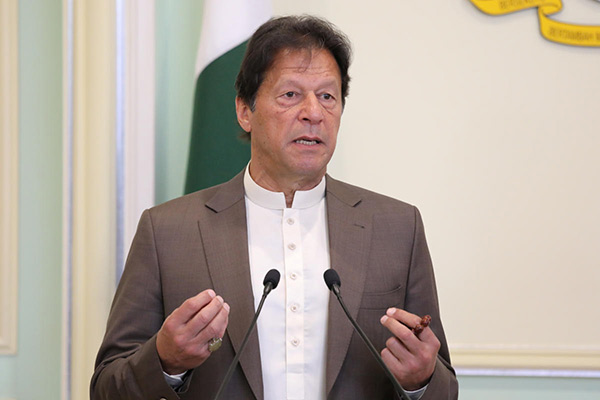
I often understand apologists as defeatist-optimists. In the 1990s, when I worked as a reporter at an English daily, one of my assistant editors explained the 1996 take-over of Afghanistan by the Taliban in the following manner: “They may be extreme in the way they view and practice Islam, but at least they will get rid of the warlords and the loot, plunder, and chaos that these warlords are causing.”
In Pakistan, between 2007 and 2015, when suicide bombings by extremists were killing civilians, cops, soldiers, and politicians with reckless abandon, one often saw men (and some women) on TV talk shows, condemning the killings. But, at the same time, they were also admonishing the so-called economic and political reasons which were supposedly making young men blow themselves up amidst crowds of innocent men, women, and children.
They were urging the state and government to “hold negotiations” and “talks” with the extremists because, according to them, the extremists’ grudges against the state and society were legitimate. Those urging this became known as apologists.
The apologists didn’t necessarily hold the same degree of views held by the extremists. Helpless to regulate the extremist narrative according to their own ‘traditionalist’ ideas of faith and morality, they began to look for ways to rationalise the violence and, sometimes, even see a rainbow at the culmination of a terrorist attack. Therefore, defeatist-optimists.
This was like rationalising nihilism in an acceptable TV-friendly manner and then — perverted as this may seem — seeing an imaginary silver lining. Most apologists looked quite like the ones they were apologising for. But not always. Some could speak fluent English, were educated in Western universities, and proudly identified themselves with the left or ‘real liberalism.’ Scholar and author Afiya S. Zia writes in her 2019 essay “Class is Dead, But Faith Never Dies” that a flurry of scholarship from Pakistani “activist-academics” (largely based in the West) emerged from “post-9/11 Empire anxiety.”
Those who attacked the World Trade Center with the two hijacked planes and killed over three thousand people described the act as an attack on US arrogance, imperialism, decadence and enforced modernity. A week after the attacks, an acquaintance of mine, who was with me in a left-wing student organisation at college in the 1980s and till a few years ago taught sociology at a college in Berlin, said: “Even though I disagree with the ideology of those who carried out the attack, this was the only way left to rebuff American arrogance and make them think twice before attacking other countries.”
So, this gentleman, who had felt helpless at the fall of communism in the 1990s, saw a rainbow at the end of the 9/11 attacks. But, of course, the attacks caused at least two more full-fledged US invasions in Afghanistan and Iraq, and a truly testing period for Muslims across the globe.
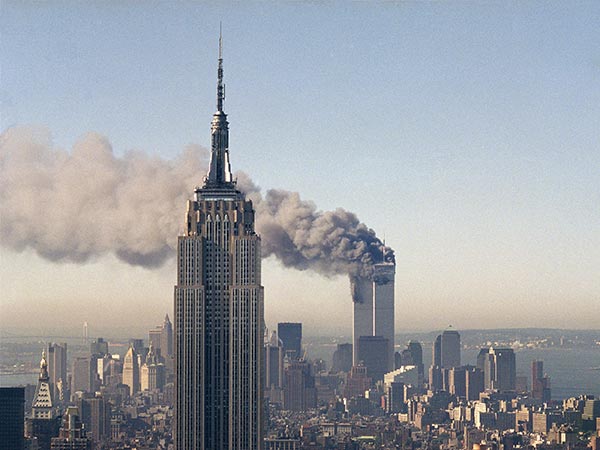
In her essay, Zia writes that the post-9/11 scholarship on Muslim identity became a cash cow. Post-modernism, post-structuralism, anthropology, Edward Said’s Orientalism, et al, were still popular on American and European campuses when 9/11 shook the world in 2001. In the wake of the reactions against Muslims after the attack, these academic disciplines that had largely been formulated by the Western academia from the 1970s onwards and had put to the sword ideas of economic, social and political modernity, were refigured to fit the idea of the evil West and remnants of modernity in the context of the post-9/11 world.
For example, Islamophobia was a distasteful and discriminatory reaction by some segments in Europe and the US. But in an attempt to censure it, the post-9/11 scholarship by various West-based Muslim scholars ended up providing apologias for those who refused to see anything problematic in the thinking which led to 9/11 and instead continued to put all blame on the West. Islamophobia was thus trivialised and shrunk into becoming an intransigent post-modernist idiom.
Zia critiques this tendency by evaluating how modern Pakistani women academics operating from Western universities treated the subject of women’s rights in Pakistan. She writes that these scholars and authors identify with the left and/or left-liberal tendencies, but their thinking is at best reactionary.
Zia is of the view that they are quicker to attack Pakistani liberals than they are to attack the ‘Islamists,’ believing that the liberals are elitist. Zia demonstrates that the ‘elite’ alone were not involved in the battle for women’s rights in Pakistan. A lot of work done to improve the economic, social, and political conditions of women in the country was also undertaken by common everyday groups of women. According to Zia, the scholars she critiques have casually ignored such groups, many of whom were also confronting the Islamists head-on.
Instead, since scholarship based on an anthropological understanding of Muslim identity became an academic trend, the mentioned scholars began to romanticise and search for rainbows in the condition of those ‘non-elite’ women who are forced to operate in ‘masculine’ concepts of piety.
Book after book appeared explaining that such ‘common’ (non-elite) women were taking ‘rational’ steps to use concepts of piety such as the hijab/niqab to become active in the public sphere. But Zia questions this assumption. She asks how could a woman who accepts a masculine idea of piety and morality, be seen as a challenge to a worldview which refuses to accept her as anyone capable of operating outside her kitchen?
And what about the ‘elite’ who are equally involved in this pursuit (e.g. the Farhat Hashmi phenomenon, brilliantly examined by Sadaf Ahmad in Transforming Faith)? What are they using ‘piety’ for? Zia sees the critiqued scholarship as an inadvertent apologia for forces that are an impediment to reform regarding women’s rights in Pakistan.

In her book Modernism, Islam & Secularism in Turkey, Turkish sociologist Alev Cinar writes that in the 1990s when some women in Turkey defied a ban on the headscarf, they claimed that wearing the hijab liberates women ‘from the male gaze’ in public. Cinar writes that by doing this they acknowledged that the public sphere was dominated by the male gaze and will remain so.
This defeated the purpose of women’s rights, which should be to neutralise the public sphere and make it gender-equal. Therefore, this is a defeatist approach that still looks for male validation for women’s participation in the public sphere.
Postmodernism was a broad movement that developed in the late 20th century and almost immediately began to dominate the intellectual, academic, and artistic scenes, especially in Europe and the US.
As a philosophy and a scholarly and artistic pursuit, postmodernism was highly critical of ‘metanarratives’ or methods of reaching holistic truths through science, empirical inquiry and readings of history mainly developed during the Age of Enlightenment and/or the Age of Reason in the 18th and 19th centuries. Postmodernism was thus understood as an attack on modernism.
The emphasis on reason, science, democracy and free enterprise during the era of Enlightenment is seen as the main catalyst which propelled the Western world towards modernism and/or a mindset, attitude and a movement that looked to modify and readjust traditional modes of political, social, economic and theological beliefs following modern ideas of progress.
In this context, modernism dominated Western politics and philosophy across the 18th, 19th, and much of the 20th century. It created powerful narratives to explain progress as the result of scientific advancements, free enterprise, individualism, secularism, and linear reading of history in which humans continuously evolved and modified their need to innovate and invent and thus dominate the planet and its resources.
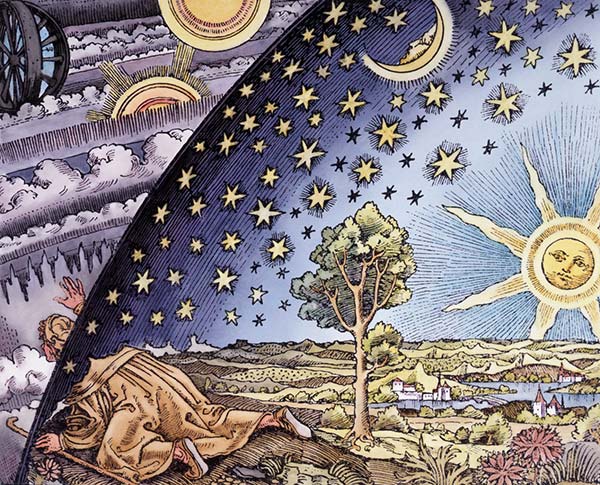
Interestingly, both capitalism, as well as socialism/communism, were products of modernism, and so were the thriving Western democracies and modernist authoritarian regimes.
Modernism’s nemesis, ironically, was not tradition. But what became to be known as postmodernism. Historians see postmodernism as initially being a project of leftist intellectuals who presented it as a critique against modernism in the 1960s. In their essay for the 1996 anthology Cultural Studies and Critical Pedagogies in Post-Modern Spaces, Colin Lankshear and Michael Peters suggest that postmodernism began as a cultural movement during the radical youth and student movements of the late 1960s, in which the protesting youth described economic, political and social progress guided by modernism as tyrannical.
After the collapse of the student movements, former leftist intellectuals and artists rebounded in the late 1970s to denounce modernism more articulately. The most influential were Jean Baudrillard, Jean-François Lyotard, Jacques Derrida, and Michel Foucault. They took to task modernism’s idea of history, art, politics, and even language, to demonstrate that these were inherently biased towards falsehoods that were manufactured to keep the political, economic, and intellectual status quo in power. The postmodernists believed that there were no universal truths but that every culture had its understanding of truth — scientific or historical.
Postmodernism began as an attempt to free leftism from the baggage of Marxist metanarratives but, according to the American literary critic Fredric Jameson, it eventually became the ‘cultural logic of late capitalism.’ Its emphasis on skepticism and scathing critique of the Age of Enlightenment and modernism marked the destruction of modernist metanarratives (which were also denounced as being ‘colonial’).
But as critics such as Jameson point out, in its attempt to destroy the whole idea of metanarratives and replace it with regional and cultural micro-narratives, postmodernism ended up creating its metanarrative and colonising tendencies.
In her March 2017 essay for Areo magazine, journalist and author Helen Pluckrose writes that postmodernists drew inspiration from controversial philosophers such as the 19th-century German thinker Friedrich Nietzsche, who romanticised ‘unreason’ and irrationalism. In his book The Seduction of Unreason, Richard Wolin writes that the early fascination with Nietzsche gave birth to Nazism in the early 20th century, even though Nietzsche was apparently not a racist.
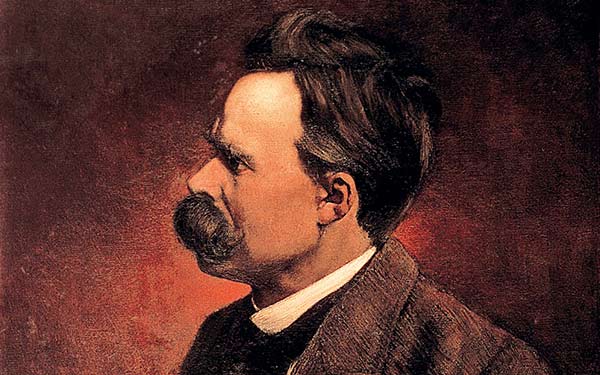
Wolin writes that Nietzsche’s attack on the idea of holistic truths, both theological and scientific, excited the late 20th century postmodernists who critiqued modernist ideas in such a manner that they opened up the scene for what is now being termed as the ‘post-truth’ age.
Donald Trump can now tweet whatever he wants to and call it the truth because, to his supporters, that is the truth which, according to postmodernist doctrine, cannot be questioned according to the perception of the truth of his critics.
On the other hand, quite like the ‘alt-right,’ the so-called liberal-left too is not that far behind, as they now seem to spend every waking hour ‘discovering’ sexism, racism, etc., in the ‘subtext’ of a text that might have nothing like that in it at all.
The postmodernist critique of modernism also excited non-Westerners who, for example, began to reject science as a ‘Judaeo-Christian construct.’ Since, supposedly, every culture has its truth, various Muslim ‘scientists’ and Indian Hindus began to construct ‘Islamic science’ or ‘Hindu science.’ If Muslims want to derive energy from jinns or Hindus believed they can cure cancer with cow dung, so be it. This is their truth and can’t be questioned — or else you have a colonial mindset.
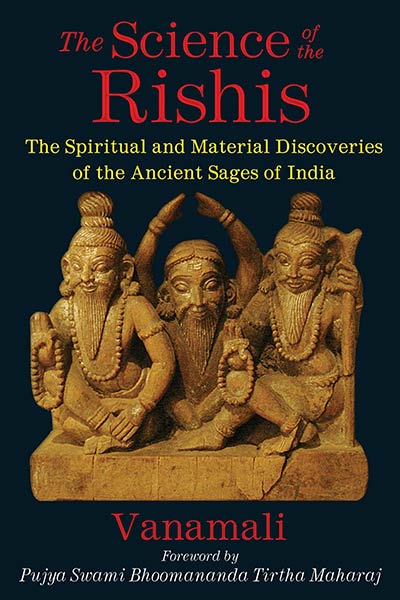
No wonder then, in the last decade or so, postmodernism has increasingly come under scathing criticism. It is denounced as being a naive intellectual fetish which spiralled out of control, romanticising suspicion, sensationalism, and irrationalism. And in its passion for pluralism, it has curtailed universalism and integration and encouraged the ghettoisation of cultures with their own set of truths, no matter how irrational they may be.
During his speech in the National Assembly yesterday (25th June, 2020) the Prime Minister of Pakistan, Imran Khan, said that Osama Bin Laden — once the most wanted man in the world and accused of masterminding and financing the deadly 9/11 attacks in the US — was a ‘martyr.’
This proclamation not only shocked the opposition, but many members of his party too were left dumbfounded. One is not sure exactly how the ‘military establishment’ has reacted, but in a time when India is probably planning another ‘false flag operation’ against Pakistan, and when the Foreign Ministry is assigned to persuade the US and other western countries to castigate India’s policies in Occupied Kashmir, one wonders how can this be achieved by a country whose PM hails a terrorist as a martyr?
There is every likelihood that after yet another tongue-lashing by an increasingly frustrated establishment, he might explain his statement as a ‘slip of the tongue.’ Or, considering his almost childlike stubbornness, he might stick to his guns. But this piece is not only about him. It’s about many people like him i.e. products of badly-digested postmodernist ideas and curious urban middle-class perceptions of faith and politics and their relationship with the so-called masses.

I often understand apologists as defeatist-optimists. In the 1990s, when I worked as a reporter at an English daily, one of my assistant editors explained the 1996 take-over of Afghanistan by the Taliban in the following manner: “They may be extreme in the way they view and practice Islam, but at least they will get rid of the warlords and the loot, plunder, and chaos that these warlords are causing.”
In Pakistan, between 2007 and 2015, when suicide bombings by extremists were killing civilians, cops, soldiers, and politicians with reckless abandon, one often saw men (and some women) on TV talk shows, condemning the killings. But, at the same time, they were also admonishing the so-called economic and political reasons which were supposedly making young men blow themselves up amidst crowds of innocent men, women, and children.
They were urging the state and government to “hold negotiations” and “talks” with the extremists because, according to them, the extremists’ grudges against the state and society were legitimate. Those urging this became known as apologists.
The apologists didn’t necessarily hold the same degree of views held by the extremists. Helpless to regulate the extremist narrative according to their own ‘traditionalist’ ideas of faith and morality, they began to look for ways to rationalise the violence and, sometimes, even see a rainbow at the culmination of a terrorist attack. Therefore, defeatist-optimists.
This was like rationalising nihilism in an acceptable TV-friendly manner and then — perverted as this may seem — seeing an imaginary silver lining. Most apologists looked quite like the ones they were apologising for. But not always. Some could speak fluent English, were educated in Western universities, and proudly identified themselves with the left or ‘real liberalism.’ Scholar and author Afiya S. Zia writes in her 2019 essay “Class is Dead, But Faith Never Dies” that a flurry of scholarship from Pakistani “activist-academics” (largely based in the West) emerged from “post-9/11 Empire anxiety.”
Those who attacked the World Trade Center with the two hijacked planes and killed over three thousand people described the act as an attack on US arrogance, imperialism, decadence and enforced modernity. A week after the attacks, an acquaintance of mine, who was with me in a left-wing student organisation at college in the 1980s and till a few years ago taught sociology at a college in Berlin, said: “Even though I disagree with the ideology of those who carried out the attack, this was the only way left to rebuff American arrogance and make them think twice before attacking other countries.”
So, this gentleman, who had felt helpless at the fall of communism in the 1990s, saw a rainbow at the end of the 9/11 attacks. But, of course, the attacks caused at least two more full-fledged US invasions in Afghanistan and Iraq, and a truly testing period for Muslims across the globe.

In her essay, Zia writes that the post-9/11 scholarship on Muslim identity became a cash cow. Post-modernism, post-structuralism, anthropology, Edward Said’s Orientalism, et al, were still popular on American and European campuses when 9/11 shook the world in 2001. In the wake of the reactions against Muslims after the attack, these academic disciplines that had largely been formulated by the Western academia from the 1970s onwards and had put to the sword ideas of economic, social and political modernity, were refigured to fit the idea of the evil West and remnants of modernity in the context of the post-9/11 world.
For example, Islamophobia was a distasteful and discriminatory reaction by some segments in Europe and the US. But in an attempt to censure it, the post-9/11 scholarship by various West-based Muslim scholars ended up providing apologias for those who refused to see anything problematic in the thinking which led to 9/11 and instead continued to put all blame on the West. Islamophobia was thus trivialised and shrunk into becoming an intransigent post-modernist idiom.
Zia critiques this tendency by evaluating how modern Pakistani women academics operating from Western universities treated the subject of women’s rights in Pakistan. She writes that these scholars and authors identify with the left and/or left-liberal tendencies, but their thinking is at best reactionary.
Zia is of the view that they are quicker to attack Pakistani liberals than they are to attack the ‘Islamists,’ believing that the liberals are elitist. Zia demonstrates that the ‘elite’ alone were not involved in the battle for women’s rights in Pakistan. A lot of work done to improve the economic, social, and political conditions of women in the country was also undertaken by common everyday groups of women. According to Zia, the scholars she critiques have casually ignored such groups, many of whom were also confronting the Islamists head-on.
Instead, since scholarship based on an anthropological understanding of Muslim identity became an academic trend, the mentioned scholars began to romanticise and search for rainbows in the condition of those ‘non-elite’ women who are forced to operate in ‘masculine’ concepts of piety.
Book after book appeared explaining that such ‘common’ (non-elite) women were taking ‘rational’ steps to use concepts of piety such as the hijab/niqab to become active in the public sphere. But Zia questions this assumption. She asks how could a woman who accepts a masculine idea of piety and morality, be seen as a challenge to a worldview which refuses to accept her as anyone capable of operating outside her kitchen?
And what about the ‘elite’ who are equally involved in this pursuit (e.g. the Farhat Hashmi phenomenon, brilliantly examined by Sadaf Ahmad in Transforming Faith)? What are they using ‘piety’ for? Zia sees the critiqued scholarship as an inadvertent apologia for forces that are an impediment to reform regarding women’s rights in Pakistan.

In her book Modernism, Islam & Secularism in Turkey, Turkish sociologist Alev Cinar writes that in the 1990s when some women in Turkey defied a ban on the headscarf, they claimed that wearing the hijab liberates women ‘from the male gaze’ in public. Cinar writes that by doing this they acknowledged that the public sphere was dominated by the male gaze and will remain so.
This defeated the purpose of women’s rights, which should be to neutralise the public sphere and make it gender-equal. Therefore, this is a defeatist approach that still looks for male validation for women’s participation in the public sphere.
Postmodernism was a broad movement that developed in the late 20th century and almost immediately began to dominate the intellectual, academic, and artistic scenes, especially in Europe and the US.
As a philosophy and a scholarly and artistic pursuit, postmodernism was highly critical of ‘metanarratives’ or methods of reaching holistic truths through science, empirical inquiry and readings of history mainly developed during the Age of Enlightenment and/or the Age of Reason in the 18th and 19th centuries. Postmodernism was thus understood as an attack on modernism.
The emphasis on reason, science, democracy and free enterprise during the era of Enlightenment is seen as the main catalyst which propelled the Western world towards modernism and/or a mindset, attitude and a movement that looked to modify and readjust traditional modes of political, social, economic and theological beliefs following modern ideas of progress.
In this context, modernism dominated Western politics and philosophy across the 18th, 19th, and much of the 20th century. It created powerful narratives to explain progress as the result of scientific advancements, free enterprise, individualism, secularism, and linear reading of history in which humans continuously evolved and modified their need to innovate and invent and thus dominate the planet and its resources.

Interestingly, both capitalism, as well as socialism/communism, were products of modernism, and so were the thriving Western democracies and modernist authoritarian regimes.
Modernism’s nemesis, ironically, was not tradition. But what became to be known as postmodernism. Historians see postmodernism as initially being a project of leftist intellectuals who presented it as a critique against modernism in the 1960s. In their essay for the 1996 anthology Cultural Studies and Critical Pedagogies in Post-Modern Spaces, Colin Lankshear and Michael Peters suggest that postmodernism began as a cultural movement during the radical youth and student movements of the late 1960s, in which the protesting youth described economic, political and social progress guided by modernism as tyrannical.
After the collapse of the student movements, former leftist intellectuals and artists rebounded in the late 1970s to denounce modernism more articulately. The most influential were Jean Baudrillard, Jean-François Lyotard, Jacques Derrida, and Michel Foucault. They took to task modernism’s idea of history, art, politics, and even language, to demonstrate that these were inherently biased towards falsehoods that were manufactured to keep the political, economic, and intellectual status quo in power. The postmodernists believed that there were no universal truths but that every culture had its understanding of truth — scientific or historical.
Postmodernism began as an attempt to free leftism from the baggage of Marxist metanarratives but, according to the American literary critic Fredric Jameson, it eventually became the ‘cultural logic of late capitalism.’ Its emphasis on skepticism and scathing critique of the Age of Enlightenment and modernism marked the destruction of modernist metanarratives (which were also denounced as being ‘colonial’).
But as critics such as Jameson point out, in its attempt to destroy the whole idea of metanarratives and replace it with regional and cultural micro-narratives, postmodernism ended up creating its metanarrative and colonising tendencies.
In her March 2017 essay for Areo magazine, journalist and author Helen Pluckrose writes that postmodernists drew inspiration from controversial philosophers such as the 19th-century German thinker Friedrich Nietzsche, who romanticised ‘unreason’ and irrationalism. In his book The Seduction of Unreason, Richard Wolin writes that the early fascination with Nietzsche gave birth to Nazism in the early 20th century, even though Nietzsche was apparently not a racist.

Wolin writes that Nietzsche’s attack on the idea of holistic truths, both theological and scientific, excited the late 20th century postmodernists who critiqued modernist ideas in such a manner that they opened up the scene for what is now being termed as the ‘post-truth’ age.
Donald Trump can now tweet whatever he wants to and call it the truth because, to his supporters, that is the truth which, according to postmodernist doctrine, cannot be questioned according to the perception of the truth of his critics.
On the other hand, quite like the ‘alt-right,’ the so-called liberal-left too is not that far behind, as they now seem to spend every waking hour ‘discovering’ sexism, racism, etc., in the ‘subtext’ of a text that might have nothing like that in it at all.
The postmodernist critique of modernism also excited non-Westerners who, for example, began to reject science as a ‘Judaeo-Christian construct.’ Since, supposedly, every culture has its truth, various Muslim ‘scientists’ and Indian Hindus began to construct ‘Islamic science’ or ‘Hindu science.’ If Muslims want to derive energy from jinns or Hindus believed they can cure cancer with cow dung, so be it. This is their truth and can’t be questioned — or else you have a colonial mindset.

No wonder then, in the last decade or so, postmodernism has increasingly come under scathing criticism. It is denounced as being a naive intellectual fetish which spiralled out of control, romanticising suspicion, sensationalism, and irrationalism. And in its passion for pluralism, it has curtailed universalism and integration and encouraged the ghettoisation of cultures with their own set of truths, no matter how irrational they may be.
